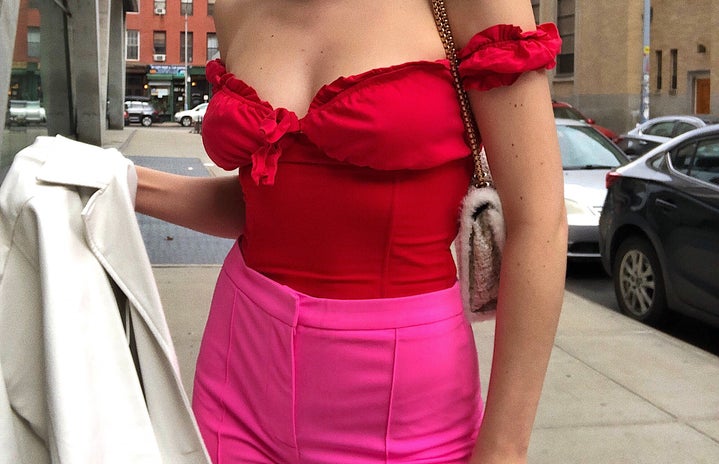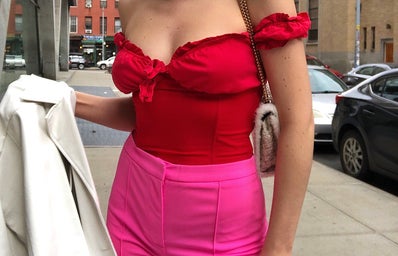If you don’t follow me on Instagram, you wouldn’t know that I released an IGTV video that loosely addressed color theory. The idea is pretty simple: if you are warm-toned, you should opt for warm colors, and if you are cool-toned, you should seek out cool colors. This is because wearing colors that suit our undertones will bring out the best parts of our complexion and will naturally — effortlessly — elevate our whole look.
Doing the opposite, however, will bring out the unpleasant features in our complexion: hyperpigmentation, undereye circles, facial hair, and redness. If you are looking to enhance your appearance, it might be wise to implement color theory into your life. It could make all the difference in how you pull off your makeup and wardrobe.
Since posting the IGTV video, I’ve received dozens of ‘thank you’ messages from individuals who finally discovered their color palette. But I also received twenty-seven messages from users who struggled to identify their undertones. Yes, twenty-seven! I didn’t mind, of course, and helped out as many people that I could with the challenge. But I have a feeling that there are more than twenty-seven people among my followers who are unsure of their undertones.
If that sounds like you, I hope this article helps you out.
My first piece of advice? Be shallow for ten minutes. Look at several images of yourself or take note of your reflection in the mirror. Does your skin radiate a glow? Is that glow more peachy-pink or peachy-gold? Often, people mistake glowy skin for obvious warm tones. But cool-toned people aren’t excluded from radiant skin! So if you notice that you are exuding more pink than you are yellow, you are likely cool-toned.
If that doesn’t help, take a good look at your clothes. My friend Keira’s skin is a deep, medium brown shade. Keira mentioned that she feels “ashy” in true reds. This is because Keira has warm undertones and “true red” is often on the cooler side of reds. If you’ve ever felt like Keira in a certain color, there’s a chance that it clashes with your undertones.
Ask yourself if you actively avoid any colors. I’m not talking about your personal dislike for the color orange. I’m talking about colors that you’ve noticed look ‘off’ on you. Autumn, for example, is a great time to wear olive greens, deep purples, muddy browns, burgundy reds, and mustard yellows. But I always felt like crap when those colors entered the seasonal palette. I spent a long time wondering if it was the cut of the clothes that was the issue, or if I was just downright styling it wrong. Once I realized all of those colors are warm-toned, it was like a meteor fell out of the sky. That was what truly helped me determine that I was cool-toned after all.
And then ask yourself if any colors make you feel amazing. Do people always seem to compliment you when wearing blue? What color is your favorite top, and does that color regularly appear in your wardrobe? (Black does not count!)
This is not an easy process. Your undertones might present a rude awakening for whatever exists in your current closet. But don’t panic. You don’t need to give up your favorite color or spend hundreds of dollars revamping your style.
Let’s work this scenario: you realize you are a cool-toned person, and everything in your closet seems to be warm. You can start small: implement color theory into your future purchases. Put aside clothes with shades that don’t compliment you and call up a friend who you’d think would look better in them. Chances are, that friend might have a pile of clothes to swap with you, too. Earn some money back by selling clothes on Depop, Poshmark, or other online stores.
Let’s try a different scenario. Let’s say you’re looking at your wardrobe, dumfounded. Maybe you shy away from both cool shades and warm shades. Or you can’t decide on your undertones. Perhaps there is some neutrality in you.
Both olive and neutral tones may struggle because their skin is made up of both blue and yellow. In theory, that means you should be able to wear a lot more colors. But that’s not how it works. Your complexion can be neutral, yet made up of more blue than yellow (and so forth). So how do you determine that?
This is when you should consider the shade of your hair color and eyes. Is your hair a warm blonde and your eyes a deep green? Your overall look will appear more warm. Or is your hair black and your eyes brown? There’s a good chance you’ll appear cooler rather than warmer. Factoring your hair and your eye color can identify what tone you best lean toward.
So yes, you can be a cool-toned olive — that’s actually what I am! (Bonus: you can have an olive complexion and be very fair. We often think of “olive-skinned” as women with gorgeous, golden tans, but that’s not entirely accurate!)
If you are still mightily struggling, this is where I suggest you look into the seasonal palette theory. This theory consists of two warm seasons (spring and autumn) and two cool seasons (winter and summer) to get a better idea of your colors. I really like the seasonal palettes because it sets up some guidelines for those who are still unsure. This subtheory takes a magnifying glass to your hair color, your eye color, and the details of your complexion to help you pinpoint your “season”.
I encourage others to look into the seasonal palette theory even if they’ve already determined their undertones. Online you will find color palettes specifically curated for your “season”, which will enhance your look even further. This is especially helpful for those who might prefer some guidance on this subject, as there are many different influences to consider that you probably haven’t before.
For example, if you are a warm-toned brunette, but your skin is freckled and your eyes are green, you’re probably a Deep Autumn. But if you were to suddenly dye your hair blonde, you would no longer be an Autumn, but rather a Warm Spring. Your seasons can shift — notice, however, that Spring and Autumn are sister seasons, both very warm. It is impossible to go from a cool Winter to a warm Spring.
If the concept of sister seasons is troubling to you, here may be a better way of thinking about it. When Nicki Minaj has dark hair, for example, she is considered to have a soft complexion. This is because the contrast of Nicki’s skin tone and hair color aren’t dramatically different. When Nicki throws on a pink or blonde wig, however, she would now have a clear complexion. This is because there is an intense contrast between Nicki’s skin and hair.
While Nicki’s complexion may be soft some days and clear other days, her undertones will always be warm. They will not be affected. Her hair color, however, can allow her to sometimes float in between sister palettes.
Color theory is deeply fascinating and prolific in its sub-theories. This article only covers the tip of the (cool-toned) iceburg, but I hope that it gives your wardrobe some well-deserved guidance. Wearing the colors that are suited for your undertones will elevate both how you look and feel. But don’t forget that the true key to being stylish is rocking confidence in what you wear — even if it’s in the wrong shade.



